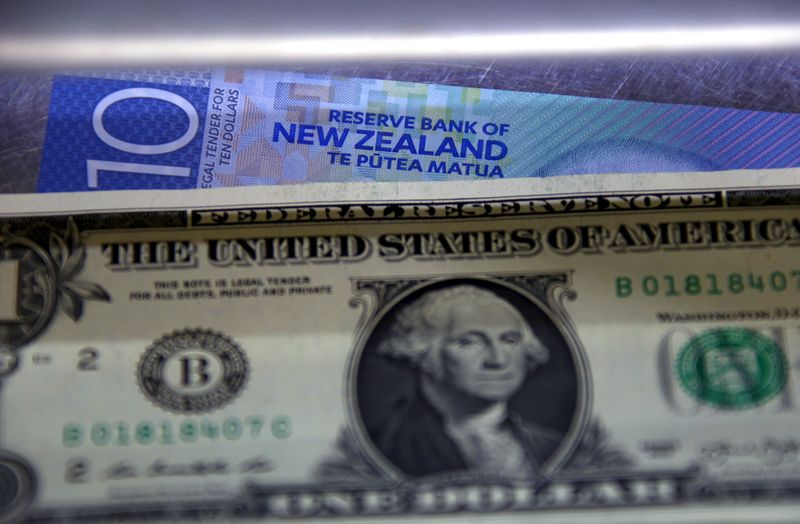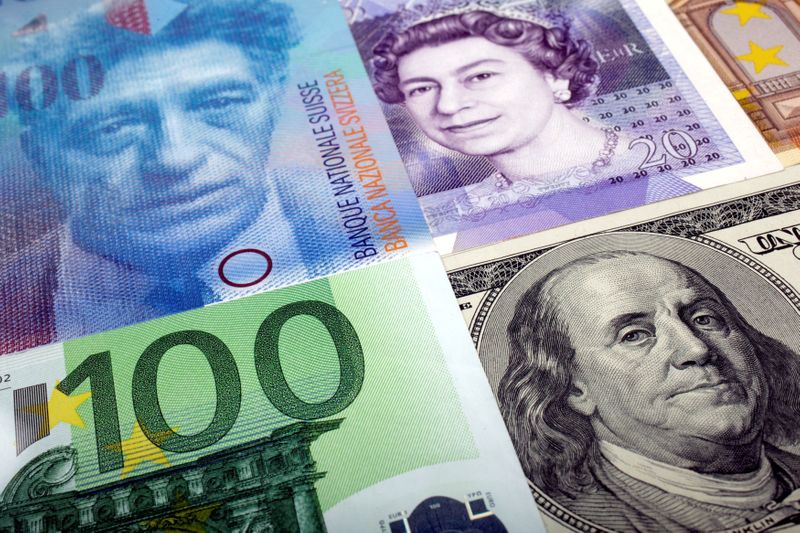By Gertrude Chavez-Dreyfuss
NEW YORK (Reuters) - The dollar advanced for a second straight session on Tuesday, bolstered by safe-haven demand, as investors fretted about Afghanistan, a slowing Chinese economy, and the rapid spread of the Delta coronavirus variant which forced some lockdowns.
The overall tone in financial markets was one of caution, with shares on Wall Street in the red.
A much sharper decline than expected in Tuesday's U.S. retail sales curbed gains in the dollar, but that was offset by the higher-than-forecast rise in industrial production, which accelerated the greenback's gains.
"This morning's retail sales report served to confirm that the U.S. consumer - the world's biggest and most dependable customer - is becoming more cautious," said Karl Schamotta, chief market strategist at Cambridge Global Payments (NYSE:GPN) in Toronto.
"This, combined with evidence of a slowdown in the Chinese economy and ongoing political turmoil in Afghanistan, is driving investors to pay off dollar-funded borrowing positions and pull money out of high-risk markets," he added.
The Afghan Taliban said on Tuesday they wanted peaceful relations with other countries and would respect the rights of women within the framework of Islamic law, as they held their first official news briefing since their shock seizure of Kabul.
Many investors, however, were not comforted by the Taliban's conciliatory tone.
In afternoon trading, the U.S. dollar index rose 0.6% to 93.119. The euro, the biggest component in the dollar index, fell 0.6% to $1.1709.
The New Zealand dollar, meanwhile, tumbled to its lowest in three weeks after the country identified its first COVID-19 case since February, prompting the government to announce new short-term lockdown measures.
The currency fell sharply earlier in the global session after Prime Minister Jacinda Arden said Auckland - where the case was reported - would go into lockdown for seven days, while New Zealand as a whole will have the toughest level of lockdown for three days.
It was last down 1.7% at US$0.6904, after dropping to US$0.6900, the lowest since late July.
The Australian dollar fell to a nine-month low after central bank meeting minutes were seen as dovish. It was last down 1.2% at US$0.7253.
The safe-haven Japanese yen was down against a firm dollar, which rose 0.3% to 109.56 yen. The Swiss franc, another safe haven, also fell versus the dollar, which was last up 0.3% at 0.9149 franc.

Investors are looking to Wednesday's minutes of the Federal Open Market Committee meeting last month, as several Federal Reserve officials have adopted a more hawkish outlook in recent weeks.
That hawkish view, however, does not take into account the most current data releases, which have come in weaker than expected, such as the poor confidence numbers amid the surge in Delta variant cases and the renewed rise in mitigation measures that could slow growth.
